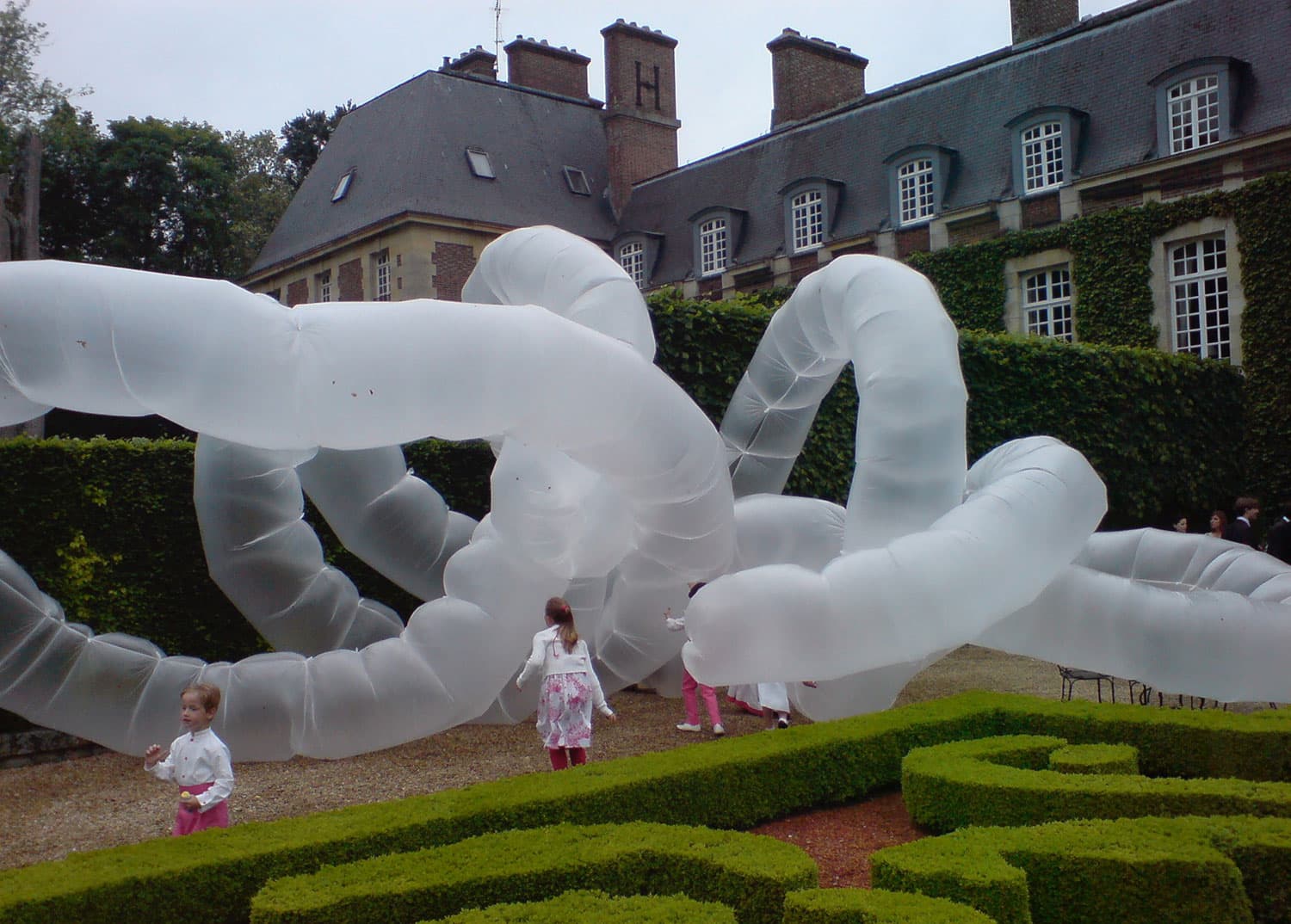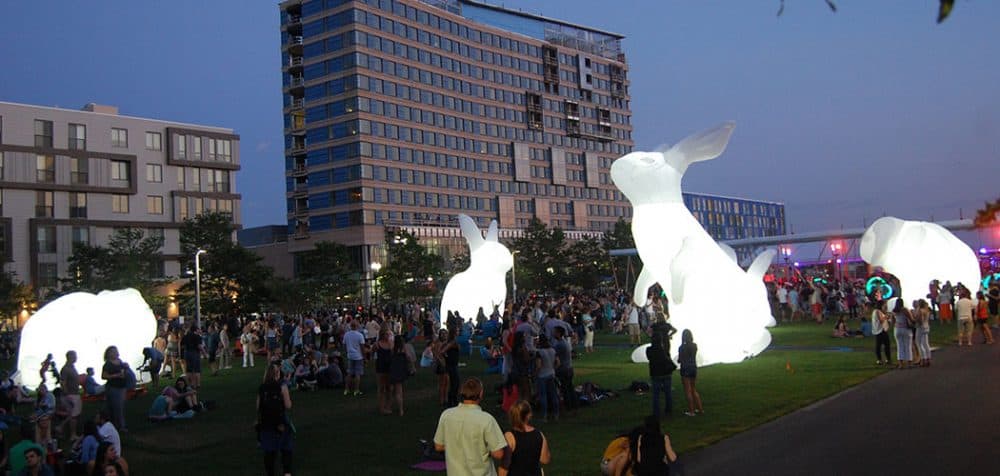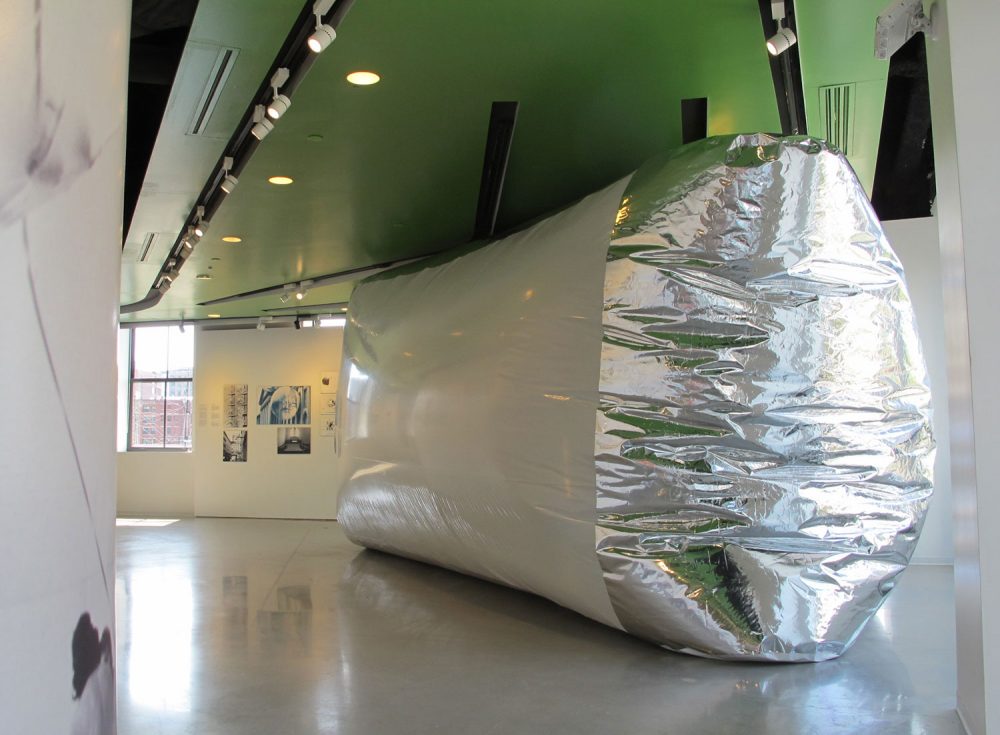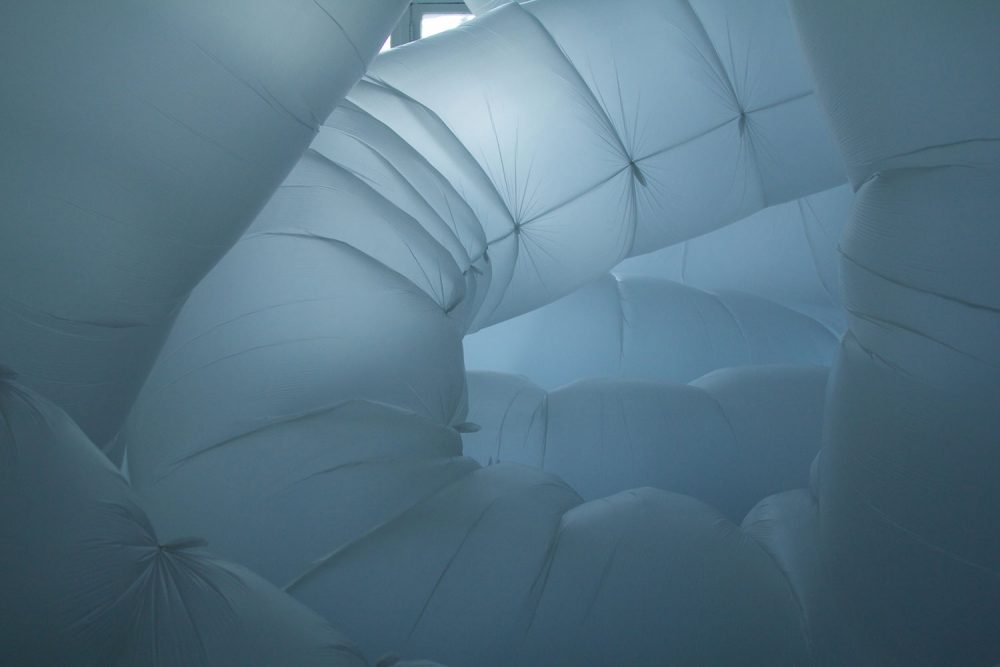Advertisement
This Weekend Only, Giant Inflatable ‘Worm-Like’ Things Will Overrun Worcester Museum

Shih Chieh Huang describes his curious inflatable art as “intestinal shapes or worm-like shapes.” He constructs the plastic tube balloons from a skin of common painter’s plastic drop cloths that he knots together and then inflates with stacks of household box fans to stretch as much as 400 feet.
For a special art exhibition this weekend, they’ll slither over the edges of the arcade along the second floor of Worcester Art Museum’s Renaissance Court and down onto the main floor where visitors can walk among them.
“I’m going to have to shrink the length. As it comes down, it starts to curl up in the space,” Huang tells me. “I still want to give viewers space to walk through.”
The installation, which the Taiwan-born, New York-based artist calls “Organic Concept,” runs from 6 p.m. Thursday, July 20, through the end of museum hours on Sunday, July 23.
“These are materials that are very common,” Huang says. “Everyone can take an ordinary object and find an alternative use for it. They don’t have to use it the way it was meant to be used.”
“Organic Concept” is just another example of the prominence of inflatables in the fine art world these days.

Australian artist Amanda Parer’s giant, light-up, inflated bunnies and English group Architects of Air’s giant, blown-up technicolor castles filled the Seaport’s Lawn On D in 2015.
“Fenway Deity,” a giant inflatable necklace with a psychedelic flower medallion created by New York landscape architect Ken Smith, hung across the Isabella Stewart Gardner Museum’s facade during the summer of 2015. (It had a funny echo of the giant inflatable lock and chain that in warm weather graces the exterior of Fortress Storage warehouse and is a landmark along Route 93 in Boston’s Dorchester neighborhood.)
And last year the William Benton Museum of Art at the University of Connecticut in Storrs presented “Blow Up,” a roundup of giant inflatable bunnies, elephants, cars and Buddhas.
All of this reflects the fine art world’s devotion to size and spectacle in recent decades. Inflatable sculptures achieve these goals while being more affordable to fabricate, more portable (perfect for artist-nomads on the international festival circuit), and more crowd-pleasing as they embrace beauty, wonder and delight.
You could trace this current fascination back to Otto Piene, of Massachusetts Institute of Technology’s Center for Advanced Visual Studies, who died in 2014. His “Sky Art” projects included a giant inflated arch of tubes that formed an “Olympic Rainbow” over the closing ceremonies of the 1972 Olympics in Munich, Germany.
Photos of Piene’s project — including crews trying it out over Boston’s Charles River before heading to Europe — are featured in the exhibition “The New Inflatable Moment” at the Boston Society of Architects’ Space through Sept. 3. Curators Mary E. Hale and Katarzyna Balug posit that the renewed interest in inflatables is evidence that “utopian thought is re-emerging today in architecture and art.”

The BSA show explores the history of inflatables as art and architecture — from early hot-air balloons to the present day — through signs and photos plus a handful of 3-D examples and models, like a robot hand activated by inflating or deflating.
Ideas range from 1970s inflatable office buildings to 2015 inflatable habitats for astronauts actually visiting Mars. Most of "The New Inflatable Moment" has a utopian, space-age optimism that new technologies can fix everything. It’s a notion shadowed from our vantage point, since we know one of the unintended consequences of this bright-eyed thinking is pollution that has fueled massive changes for the planet.
The exhibit mentions that the art collective Ant Farm’s 1970 “Clean Air Pod” at the University of California at Berkeley warned about the dangers of pollution by inviting people into a tent of (supposedly) cleaner air. But most of the designs remain blithely enamored by plastics and other synthetics.
At the Worcester Art Museum, Huang shares this fascination — but he comes at plastics more from the big box store consumer products end. This weekend's temporary installation is part of his exhibition “Reusable Universes” at the museum through Nov. 12. He aims to animate plastic storage bins, plastic bags and other inanimate objects. In the past, he’s made trash bags seem to breathe. And he’s created blinking, light-up machines with arms that inflate, deflate and wave like curious undersea creatures.

As he put it in a 2014 TED Talk, “I'd like to share with you how ordinary things can become something magical and wondrous.”
